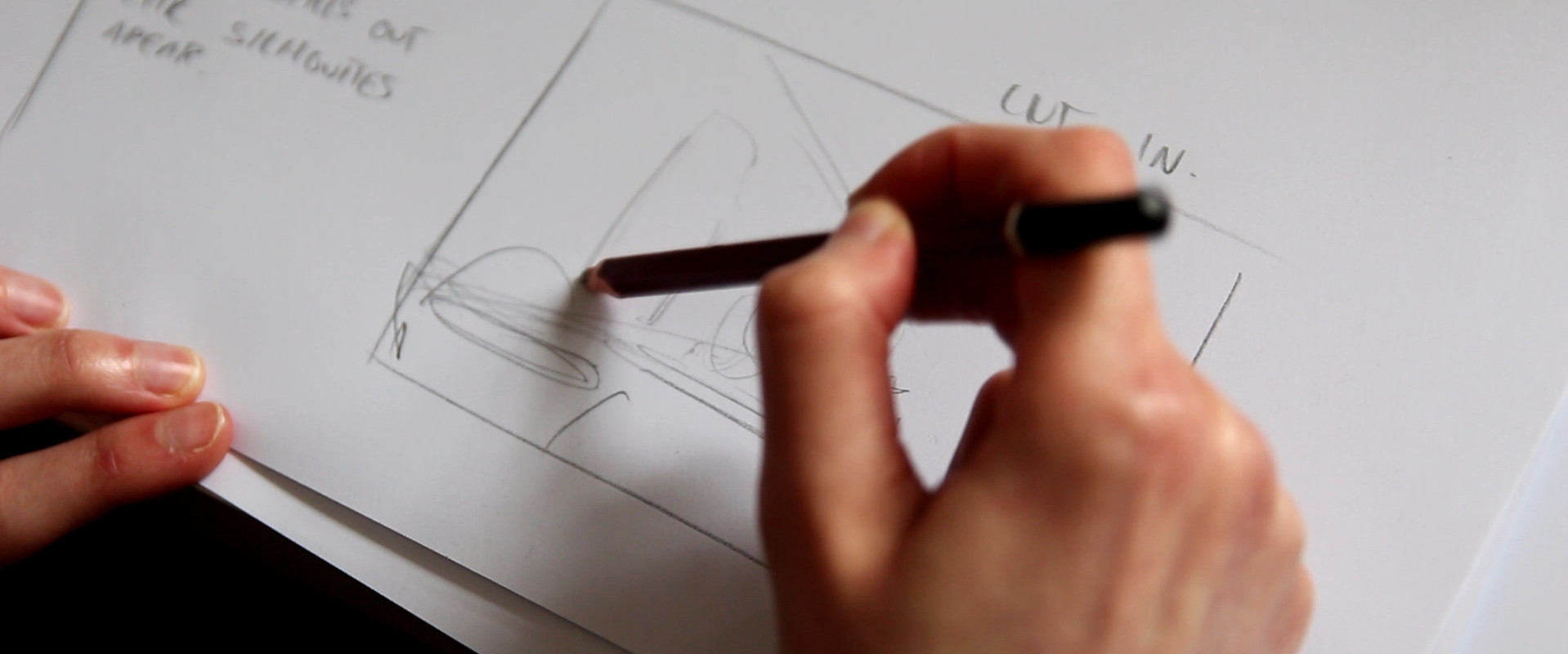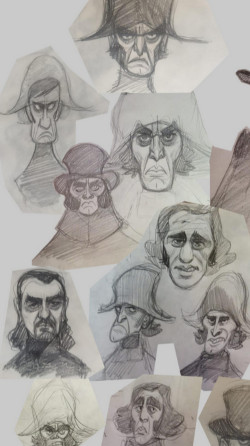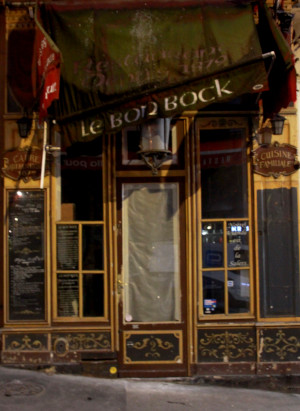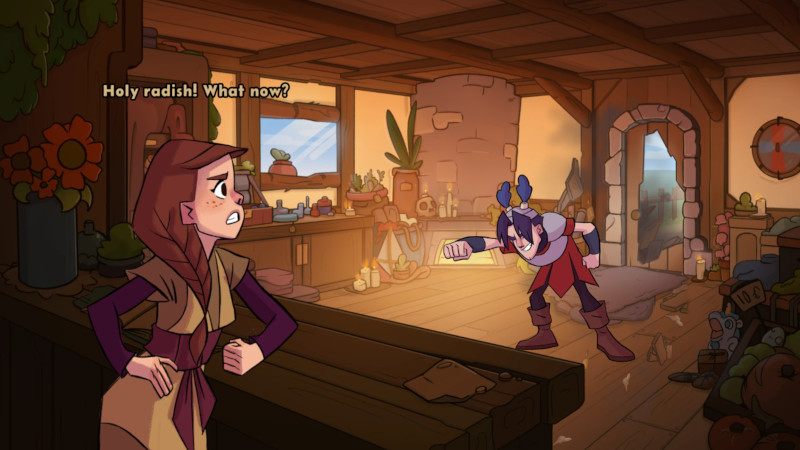Making a
Modern Classic
To make a classic-style adventure game that feels timeless,
we draw from the classics of literature, art and gaming,
and make sure every step has a human touch.

We wanted Less Miserables to have the quality and soul of the giants of point-and-click adventure games, but with the accessibility and fidelity of modern gaming. So we have high-resolution, but hand drawn characters and backgrounds, with a consistent art style and colour script.
 We've spent 6 months on pre-production, researching French art and cartoons from the 19th Century, and combining them with inspiration from our favourite animated films, TV, graphic novels and games to create a unique art style. We've storyboarded every scene, and created a colour script, so the tones of each act and scene help tell the story and advance the narrative in every dimension.
We've spent 6 months on pre-production, researching French art and cartoons from the 19th Century, and combining them with inspiration from our favourite animated films, TV, graphic novels and games to create a unique art style. We've storyboarded every scene, and created a colour script, so the tones of each act and scene help tell the story and advance the narrative in every dimension.
For our characters, we looked at portrayals of classic characters from Les Miserables on stage, screen and print, together with our own 'dream casting' from history and contempory film, to create dozens of characters that tell the story in a new, but anchored way.
 The whole team spent a week in Paris location scouting, eating crepes, visiting museums and key places from the story. It was also a great opportunity to get inspiration for building style, textures, ambience and also colourful characters who will appear in the game. We wrote this up for a 6 page feature 'Going the extra mile' in the amazing Indie Game print magazine, Debug!
The whole team spent a week in Paris location scouting, eating crepes, visiting museums and key places from the story. It was also a great opportunity to get inspiration for building style, textures, ambience and also colourful characters who will appear in the game. We wrote this up for a 6 page feature 'Going the extra mile' in the amazing Indie Game print magazine, Debug!
When writing the story, we've drawn from elements of Victor Hugo's original novel as well as inspiration from stage and screen, but also tried to condense the story to it's emotional core and key beats, while putting in as many cheeky references to our favourite movies and tv shows that we can get away with. Less Miserables draws as much from modern classics like Return of the Obra Dinn and Pokemon as it does from the LucasArts behemoths, so that everyone can find a reference to laugh at. We also watch a lot of old weird TV shows, so the style of humour might be a bit different...
And we are doing this without any AI tools! It's just no substitute for human creativity and weirdness, and we want to make something new and unique. The studio was also founded on a strict 'no-crunch' or crazy deadlines approach, and wants to pay our team fairly for flexible and fun work where everyone can input. The whole team are also based in Edinburgh, and while we work from home most of the time, we have an office and meetup reguarly for storyboarding sessions, watching bits of movies or just sharing cool art stuff. These informal meetups are so important for the random ideas and conversations that spawn silly dialogue or puzzle ideas!
The last part of our point-and-click puzzle is the voice acting - full voice performance is really important to bringing characters to life, and experienced actors and actresses bring an extra dimension that draws you in. But we wanted to go one further, and allow the voice cast to truely interact with each-other, to have dynamic conversations and arguments, and even improvise and change lines. So we are recording the dialogue really early in the development process, and with a 'live' recording where the cast are in the same studio at the same time. This makes for a more lively and improvisational performance that will be the baseline for animations and telling the story.
 All the above are things that we practiced on our first, very short game The Protagonish which was our 'pathfinder' project. We wanted to practice working together (none of us had made a game before) and getting the art, voices and art to come together was something we wanted to learn on something with manageable scale. We also did testing, marketing, and release for the first time, and have such a better idea of what we are doing now!
All the above are things that we practiced on our first, very short game The Protagonish which was our 'pathfinder' project. We wanted to practice working together (none of us had made a game before) and getting the art, voices and art to come together was something we wanted to learn on something with manageable scale. We also did testing, marketing, and release for the first time, and have such a better idea of what we are doing now!
We'd love to have you along for the ride, so sign up for our newsletter to get the latest updates, and find out about release dates, demos and exclusive insights!